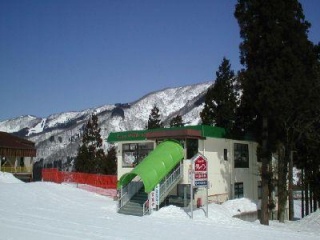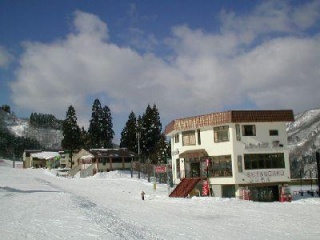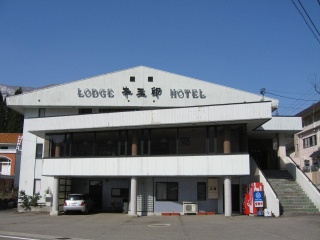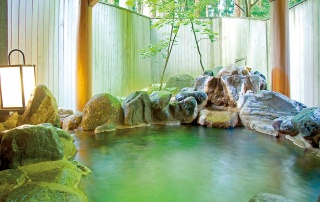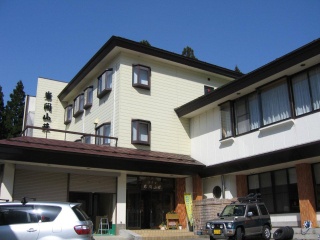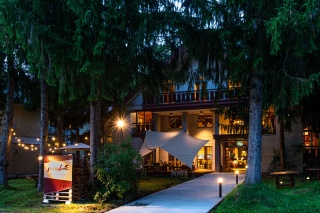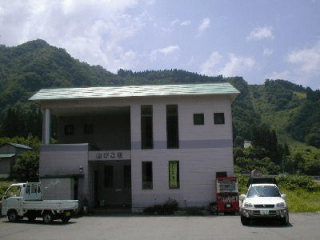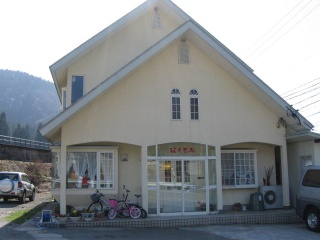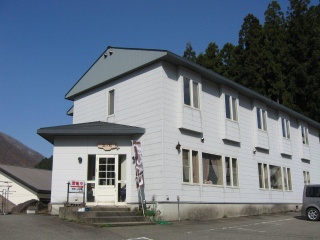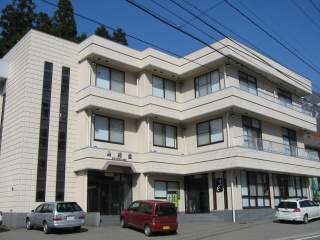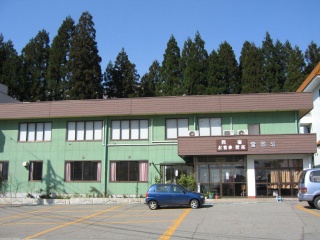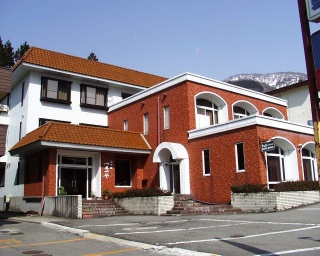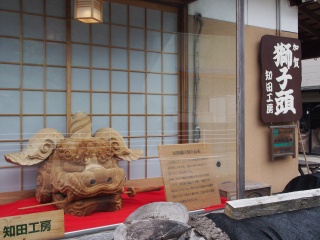白山下山仏社(尾添白山社)
はくさんげざんぶつしゃ(おぞうはくさんしゃ)加賀禅定道から下山した仏像を守り続ける
白山から下ろされた仏像9体をお祀りしているお堂です。
明治になって出された神仏分離令に基づき、それまで一緒に祀られていた神と仏、神社と寺院がはっきりと分けられ、仏教に関係する多くのものが廃されました(廃仏毀釈)。
白山に祀られていた数千ともいわれる石仏も、そのほとんどが壊されたり谷に廃棄されたりしたとのことです。
明治5年に白山と山麓18ヶ村が石川県の所管となり、石川県の指示により山頂の仏像を下山させることになりました。
実際の下山作業は明治7年7月に行われ、白山三峰の頂上付近に祀られていた仏像9体は白峰の林西寺に移されました。
その際、加賀側から白山に登る加賀禅定道の檜新宮(ひのきしんぐう、ひのしんぐう)からも仏像が下山。尾添村の村人たちによって小さなお堂に安置され、長く「神様」と称して崇拝されてきました。それが今「白山下山仏社」に祀られている「白山下山仏」です。
現在は「尾添白山社 白山下山仏 半鐘含む(仏体九点半鐘一点)」として、石川県指定文化財(歴史資料)になっています。
・木造 阿弥陀如来像/建保4年(1216)
仏師・快慶の作風に通ずるものがあり、鎌倉時代の正統派仏師の作と考えられています。
蓮台裏面に「錦小路本尊也 阿念(花押)建保四年十一月 廿三日」とあり、この像が元は京都錦小路の本尊であったことが分かります。
・木造 地蔵菩薩立像/平安時代
・木造 地蔵菩薩立像
・銅造 観音菩薩坐像(安正観音)
頭部と躯部は別物で、頭部は鎌倉時代の十一面観音像の頭部菩薩面であり、江戸時代に鋳造した躯部とつないであります。
厨子に銘があり、この像が「安正観音」と呼ばれていることや、異国の渡来仏として信仰されていたことなどが記されています。
・木造 十一面観音坐像/寛永13年(1636)
・銅造 地蔵菩薩立像/元禄13年(1700)
高宮忠一の作。
・銅打出 不動明王立像/元禄15年(1702)
剣身は別の板金を差し込んであります。
像の右に「元禄十五年壬午歳六月吉日」、左下に「大久保長右衛門」の銘文があります。
・銅打出 金剛童子像/鎌倉時代
銅板を打ち出した像を、漆塗りの板に釘止めしてあります。
通例の金剛童子の姿とは異なり、右手に宝棒を持ち、左手を高く上げていて、金剛杵は持っていません。
・木造 地蔵菩薩立像(五躯)
五躯はいずれも一木から彫り出した10㎝程度の像で、底部に小さな穴が空いています。
行人が携帯して白山に登り、台に釘などでで像を立てて礼拝したものと考えられています。
・銅鑼/宝永3年(1706)
檜新宮にあった鐘の音が、一里(約4㎞)離れた現在の一里野地区まで届いたそうです。
それで「一里野」という地名が付いたと言われます。
尾添宝代坊が勧進奉納したものです。
Ozo Hakusan Shrine
Gezan Butsu: The Buddhist Statues that Descended the Mountain
Ozo Hakusan Shrine
Designated Tangible Cultural Properties of Ishikawa Prefecture
The Buddhist statues and bell preserved within this tiny shrine were once housed in small temples along the Kaga-Zenjodo, one of the main pilgrimage and climbing routes (zenjodo) up Mt. Hakusan. The mountain has been considered sacred since the eighth century, from which time it has served as a center for Shugendo, a religion blending Buddhism, Shinto, and mountain worship.
However, at the start of the Meiji era (1868–1912), a time of great change and rapid modernization in Japan, the new government demanded that the once-intertwined Shinto and Buddhist religions be separated. This led to the destruction of many temples and Buddhist statues, threatening to include those on Mt. Hakusan. In 1874, local people quietly retrieved the statues of their beloved Buddhas and carried them down the mountain. They then hid them in Ozo Hakusan Shrine, where they remain to this day. The statues are affectionately called gezan butsu, “the Buddhas that descended the mountain.”
The two oldest figures are a wooden statue of Amida Nyorai, the Buddha of Infinite Life and Light, dating to 1216, and a wooden statue of the Eleven-Headed Kannon, the bodhisattva of compassion, from 1636. Other treasures include a bronze Jizo guardian statue from 1700, an embossed bronze plate of the protector deity Fudo Myo-o from 1702 and one of his attendants Kongo Doji, along with several other Jizo statues. The collection also includes one Buddhist bell.
基本情報
- 住所
- 石川県白山市尾添
- 電話番号
- 076-256-7444
- 電話番号備考
- 一里野の宿 牛王印(ごおいん)
- 関連資料
- The Hakusan Gezan Buddhas and Bell at Hakusan Shrine





